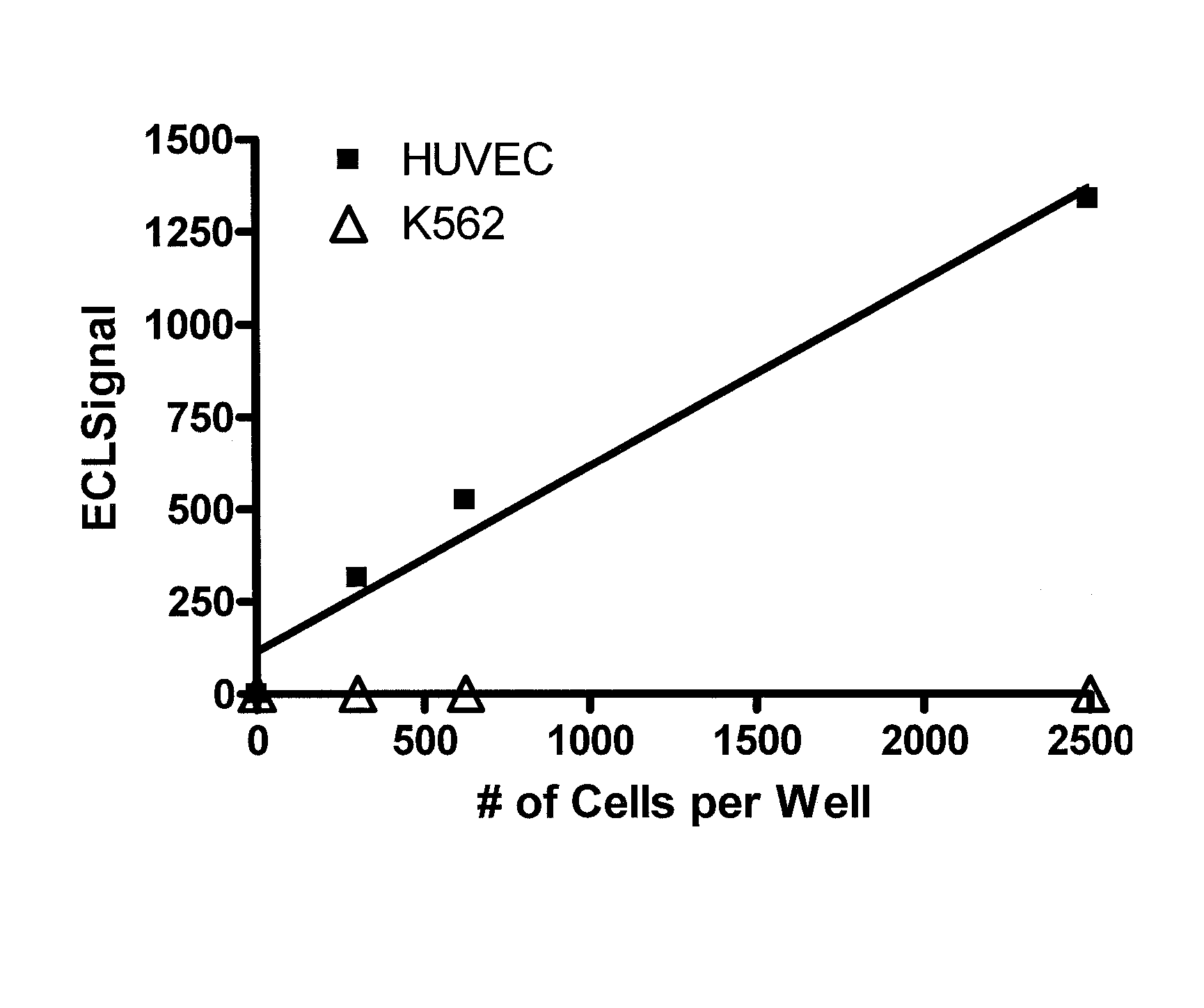Detection of circulating endothelial cells
a technology of endothelial cells and detection methods, applied in the field of detection of circulating endothelial cells, can solve the problems of high background staining of flow cytometry, cumbersome and time-consuming approach, and hampered clinical testing of these agents
- Summary
- Abstract
- Description
- Claims
- Application Information
AI Technical Summary
Benefits of technology
Problems solved by technology
Method used
Image
Examples
example 1
[0066]A patient comes into the office and a blood sample is collected in a tube to prevent clotting. mCECs are isolated and then lyzed using a lysis buffer. A ruthenium-labeled antibody against an antigen against mCECs and a biotinylated antibody (also against the antigen from mCECs) is added along with a solution of tripropylamine and magnetic beads with avidin attached. An electric current is applied and electrochemiluminescence (ECL) is detected using an ECL detection device such as one commercially available (BioVeris Corporation or Roche Diagnostics). The signal is proportional to the amount of mCECs per ml found in the circulation.
example 2
[0067]Methods as in Example 1, in which mCECs are isolated or enriched using magnetic beads coated with antibodies against vWF. These cells are lysed using Sigma Lysis Buffer [Sigma CelLytic™-M (Sigma Product Number C 2978, Sigma-Aldrich, Inc., St. Louis, Mo. 63103)]. Cell lysis is performed as per the manufacture's recommendation with the addition of 5 minutes of vigorous vortexing prior to cell debris removal. Cell debris is removed from the cell lysate by centrifugation at 14,000 rpm for 30 minutes in an Eppendorf Centrifuge (Model 5415C). A magnet is used to further deplete the magnetic particles. Ruthenium-labeled antibodies against CD-146 and biotinlyated antibodies against CD-146 are added to the lysate and then magnetic strepavidin beads and a solution containing tripropylamine. An electric current is applied and electrochemiluminescence (ECL) is detected using an ECL detection device such as one commercially available (BioVeris Corporation). The signal is proportional to th...
example 3
[0068]Methods as in example 2, except that the number of CEPs is determined and the magnetic beads used for isolation or enrichment of CEPs are coated with antibodies against CD133 not vWF and the sandwich ECL immunoassay uses antibodies against VEGFR-2 not CD-146.
PUM
| Property | Measurement | Unit |
|---|---|---|
| sizes | aaaaa | aaaaa |
| sizes | aaaaa | aaaaa |
| sizes | aaaaa | aaaaa |
Abstract
Description
Claims
Application Information
 Login to View More
Login to View More - R&D
- Intellectual Property
- Life Sciences
- Materials
- Tech Scout
- Unparalleled Data Quality
- Higher Quality Content
- 60% Fewer Hallucinations
Browse by: Latest US Patents, China's latest patents, Technical Efficacy Thesaurus, Application Domain, Technology Topic, Popular Technical Reports.
© 2025 PatSnap. All rights reserved.Legal|Privacy policy|Modern Slavery Act Transparency Statement|Sitemap|About US| Contact US: help@patsnap.com



